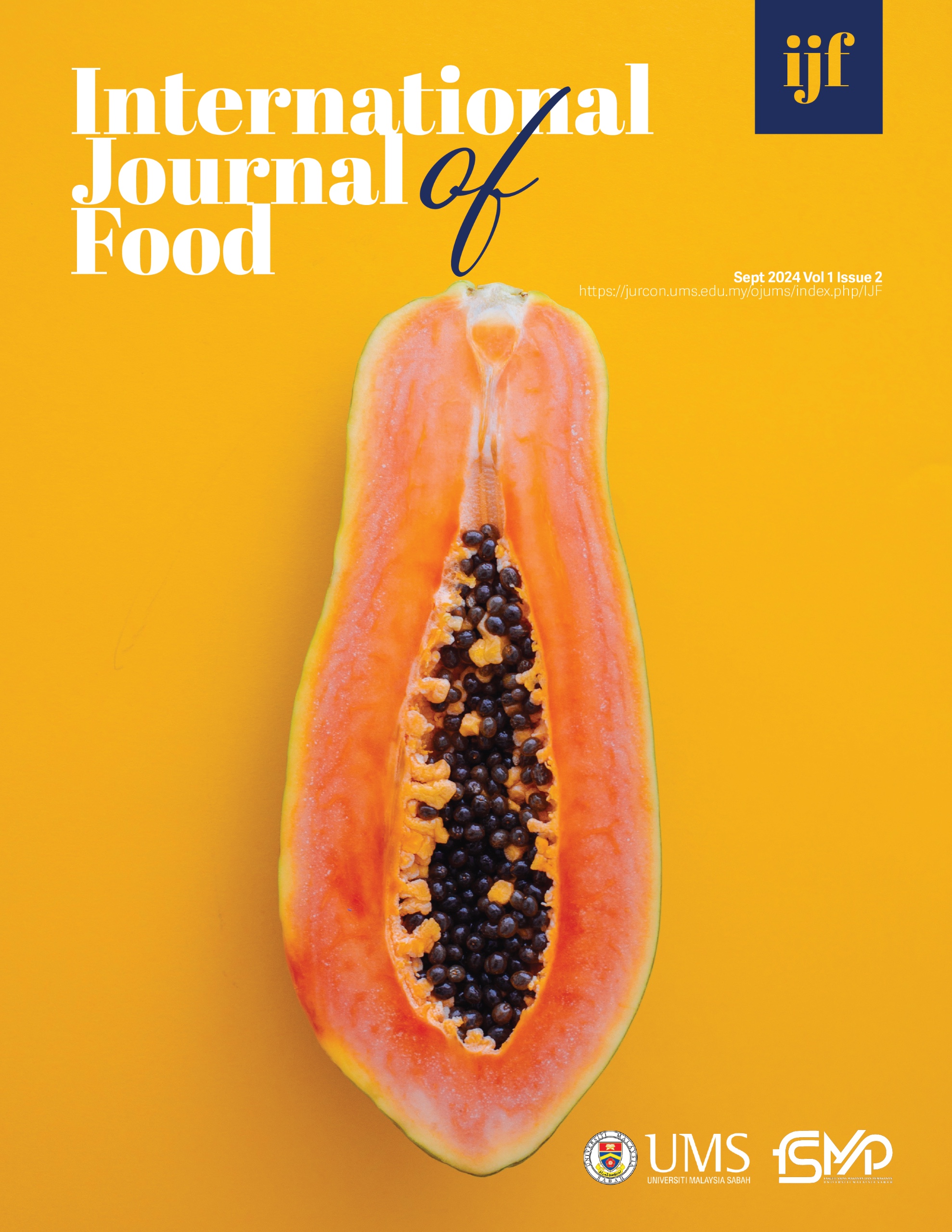Valorization of Bambangan (Mangifera pajang) By-Product by Extraction of Mangiferin using Ultrasonic Assisted Extraction
DOI:
https://doi.org/10.51200/ijf.v1i2.5143Keywords:
Bambangan, Mangifera Pajang, Mangiferin, Ultrasonic-Assisted Extraction, High Performance Liquid ChromatographyAbstract
Bambangan (Mangifera pajang) is a fruit belonging to the Anacardiaceae family, which is a lesser-known member of the mango family. It is native to West Malaysia, namely in Sabah and Sarawak. This fruit possesses a significant amount of dietary fiber, is rich in juice, and emits a strong smell. Typically, around 35-40% of the fruit's total weight, which includes the peel and seed, is discarded as waste. Mangiferin, a xanthone C-glucoside possessing notable antioxidant and antibacterial characteristics, is predominantly present in the foliage of mango plants. This study employed ultrasonic-assisted extraction (UAE) to extract mangiferin from bambangan peels and seeds. The study specifically investigated the impact of ethanol concentration (ranging from 40% to 60%), temperature (ranging from 40 °C to 60 °C), extraction time (ranging from 5 to 15 minutes), and sample-solvent ratio (ranging from 1:10 to 1:30 w/v) on the concentration of mangiferin. Mangiferin was quantified using high-performance liquid chromatography (HPLC). The optimal conditions for extracting mangiferin using UAE were determined to be a 50% ethanol concentration, a temperature of 50 °C, an extraction time of 10 minutes, and a sample-solvent ratio of 1:20. The seeds of the bambangan fruit revealed the highest concentration of mangiferin at 264.89 ± 5.67 mg/mL, whereas the peels had a value of 94.82 ± 1.49 mg/mL. These findings indicate that the peels and seeds of bambangan have potential as alternate sources of mangiferin for the food and pharmaceutical industries.










